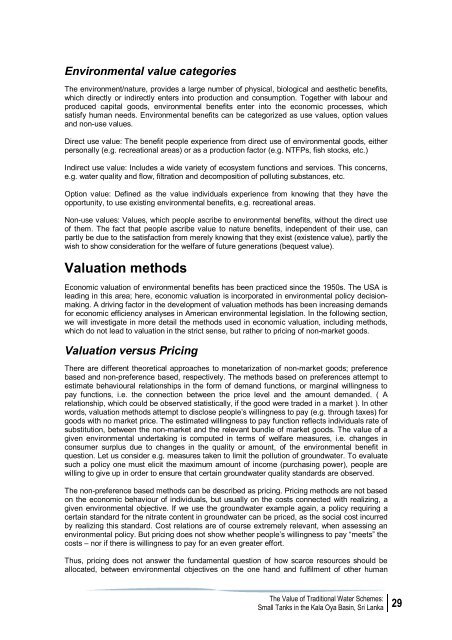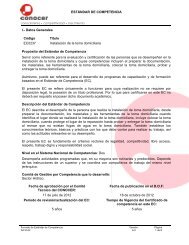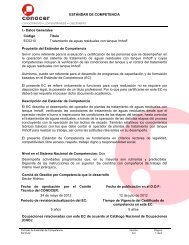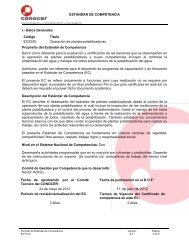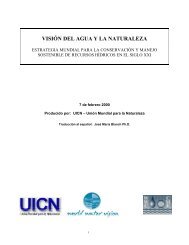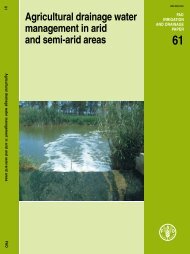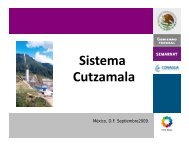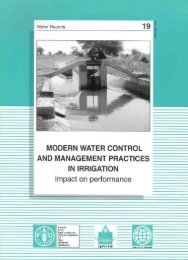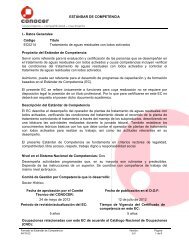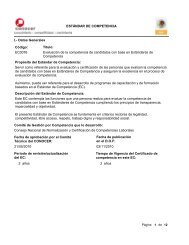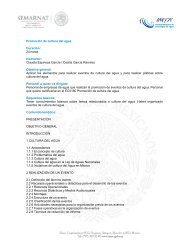Document - IUCN
Document - IUCN
Document - IUCN
Create successful ePaper yourself
Turn your PDF publications into a flip-book with our unique Google optimized e-Paper software.
Environmental value categoriesThe environment/nature, provides a large number of physical, biological and aesthetic benefits,which directly or indirectly enters into production and consumption. Together with labour andproduced capital goods, environmental benefits enter into the economic processes, whichsatisfy human needs. Environmental benefits can be categorized as use values, option valuesand non-use values.Direct use value: The benefit people experience from direct use of environmental goods, eitherpersonally (e.g. recreational areas) or as a production factor (e.g. NTFPs, fish stocks, etc.)Indirect use value: Includes a wide variety of ecosystem functions and services. This concerns,e.g. water quality and flow, filtration and decomposition of polluting substances, etc.Option value: Defined as the value individuals experience from knowing that they have theopportunity, to use existing environmental benefits, e.g. recreational areas.Non-use values: Values, which people ascribe to environmental benefits, without the direct useof them. The fact that people ascribe value to nature benefits, independent of their use, canpartly be due to the satisfaction from merely knowing that they exist (existence value), partly thewish to show consideration for the welfare of future generations (bequest value).Valuation methodsEconomic valuation of environmental benefits has been practiced since the 1950s. The USA isleading in this area; here, economic valuation is incorporated in environmental policy decisionmaking.A driving factor in the development of valuation methods has been increasing demandsfor economic efficiency analyses in American environmental legislation. In the following section,we will investigate in more detail the methods used in economic valuation, including methods,which do not lead to valuation in the strict sense, but rather to pricing of non-market goods.Valuation versus PricingThere are different theoretical approaches to monetarization of non-market goods; preferencebased and non-preference based, respectively. The methods based on preferences attempt toestimate behavioural relationships in the form of demand functions, or marginal willingness topay functions, i.e. the connection between the price level and the amount demanded. ( Arelationship, which could be observed statistically, if the good were traded in a market ). In otherwords, valuation methods attempt to disclose people’s willingness to pay (e.g. through taxes) forgoods with no market price. The estimated willingness to pay function reflects individuals rate ofsubstitution, between the non-market and the relevant bundle of market goods. The value of agiven environmental undertaking is computed in terms of welfare measures, i.e. changes inconsumer surplus due to changes in the quality or amount, of the environmental benefit inquestion. Let us consider e.g. measures taken to limit the pollution of groundwater. To evaluatesuch a policy one must elicit the maximum amount of income (purchasing power), people arewilling to give up in order to ensure that certain groundwater quality standards are observed.The non-preference based methods can be described as pricing. Pricing methods are not basedon the economic behaviour of individuals, but usually on the costs connected with realizing, agiven environmental objective. If we use the groundwater example again, a policy requiring acertain standard for the nitrate content in groundwater can be priced, as the social cost incurredby realizing this standard. Cost relations are of course extremely relevant, when assessing anenvironmental policy. But pricing does not show whether people’s willingness to pay “meets” thecosts – nor if there is willingness to pay for an even greater effort.Thus, pricing does not answer the fundamental question of how scarce resources should beallocated, between environmental objectives on the one hand and fulfilment of other humanThe Value of Traditional Water Schemes:Small Tanks in the Kala Oya Basin, Sri Lanka29


